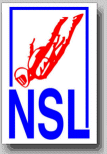
National
Skydiving
League
226 Pecan Street
Deland FL 32724
tel: (386) 801-0804
© 2003 - 2025
All Rights Reserved


226 Pecan Street
Deland FL 32724
tel: (386) 801-0804
© 2003 - 2025
All Rights Reserved



The competition in Italy is called the "Roberto Mirzan Trophy". Sinapsi PD member and 4-way bronze medalist of 2006, Luca Marchioro, organized the competition. His Meet Director was Claudio Bionda. The hosting dropzone is called "Area Delta 47" and is located in Casale Monferrato near Torino.

John Hart had prepared the MESL Meet'n Greet with a series of 4-way articles in the Start Skydiving newsletter that would prepare the participants and other teams and competitors for the MESL season opener. His last 4-way tips covered the emotional part and the logistics of a training camp.

Skydiving in general tends to create sensory overload for its participants. Doing 4-way increases this overload by requiring a skydiver to execute many moves, some difficult, and to remember sequences of formations, sometimes long and complex. Competition makes the situation even harder by jacking up performance anxiety.

- Visualization of the skydive to ensure remembering it in freefall
- Deep, slow breathing to slow the heart rate and calm the jumper
Literature:
Mental Training for Skydiving and Life, by John DeRosalia
The Inner Athlete, by Dan Millman
Fight Your Fear and Win, by Don Greene
The New Toughness Training for Sports, by James E. Loehr

- Meet at prearranged time
- Unload and prepare equipment as necessary
- Warm up by running, jumping jacks, etc.
- Stretch as a group
- Engineer, walk, and creep the first dive(s)
- Deal with manifest, put money on account, update reserve dates
- Gear up
- Load, ride plane, jump, land
- Drop off rigs at packers (or pack yourself)
- If doing back-to-backs, repeat
- Review & debrief dive(s)
- Repeat
- When done jumping, hold a review of the day and pass the rock. At the end of the camp, hold a business meeting.
- Pay packers, pay manifest, pay videographer, pay coach, mortgage house...

The competition routine should be as similar to the training routine as feasible, to reduce meet-related anxiety. However, some changes are necessary. For instance, the time spent on the ground will probably be significantly longer than when training. Maximizing performance in a meet also requires paying attention to the following in your competition plan:
- During downtime, make sure everybody knows where everybody else is.
- Determine how much mingling with other competitors you will do during the meet.
- Keep hydrated and fed.
- Minimize exposure to sun.
- Decide as a team whether you will look at / discuss the scores.

Tunnel training days should also have an established routine. This includes:
- Get to the tunnel with sufficient time to prepare.
- Plan your use of the tunnel time before each session.
- Do any dirt diving needed before the session.
- Debrief each session effectively.
- Stay hydrated and fed.
- Make sure you leave time for sufficient sleep.